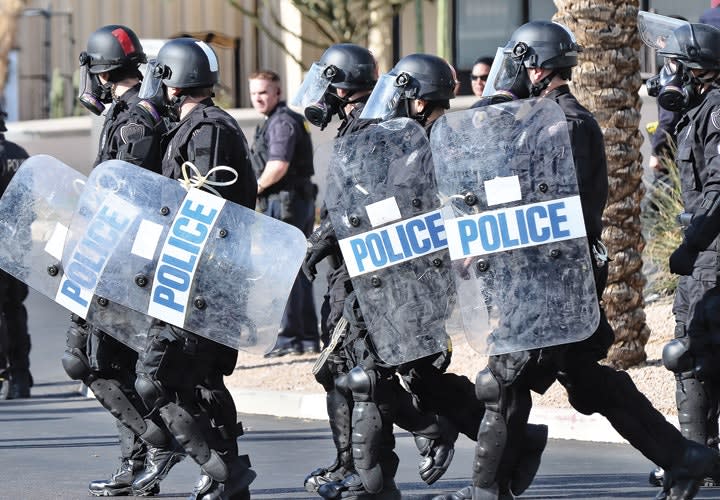The Center for Domestic Preparedness (CDP) has been around since 1998 to serve the needs of emergency responders at all levels of government. The CDP has helped standardize mobile field force training and, more importantly, offers it at no cost to the local agencies.
Lisa Hunter is the external affairs director for the CDP. She says the organization uses a training model that is proven and tested at major events and incidents of civil unrest. There are five different CDP mobile field force training modules. They cover such areas as operations, extractions, and command. The modules are integrated with the NIMS (National Incident Management System) model for Incident Command, so it is standardized for everyone. The CDP training ensures that everyone is using the same tactics and command structure, making it easier to pool local resources for a large-scale event.
Most agencies look at their MFF units as if they were in a glass case with a sign that reads: "In Case of Emergency, Break Glass." They are comforted that these units are available should the protesters descend on city hall, but they aren't willing to make sure they are well equipped and well trained.
These agencies are making a costly mistake. With the recent court cases arising out of the use of mobile field force tactics, the potential multi-million-dollar judgments should motivate any agency to fund the training for these units. Considering that the CDP offers high-quality training at no cost to the local agencies, there really are no excuses for every agency not training a mobile field force, "just in case."
Mark W. Clark is a 27-year veteran police sergeant. He has served as public information officer, training officer, and as supervisor of various detective and patrol squads.













